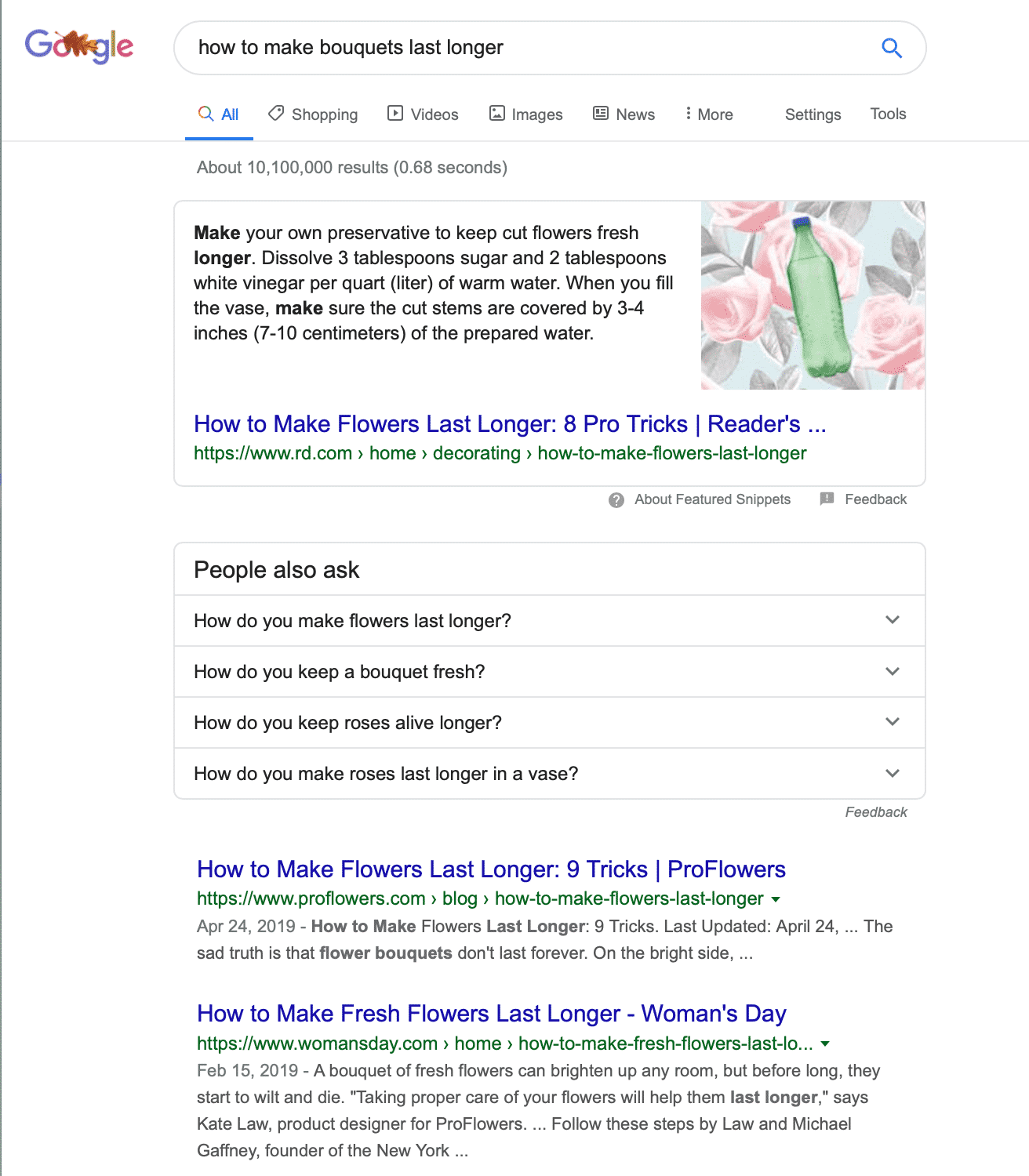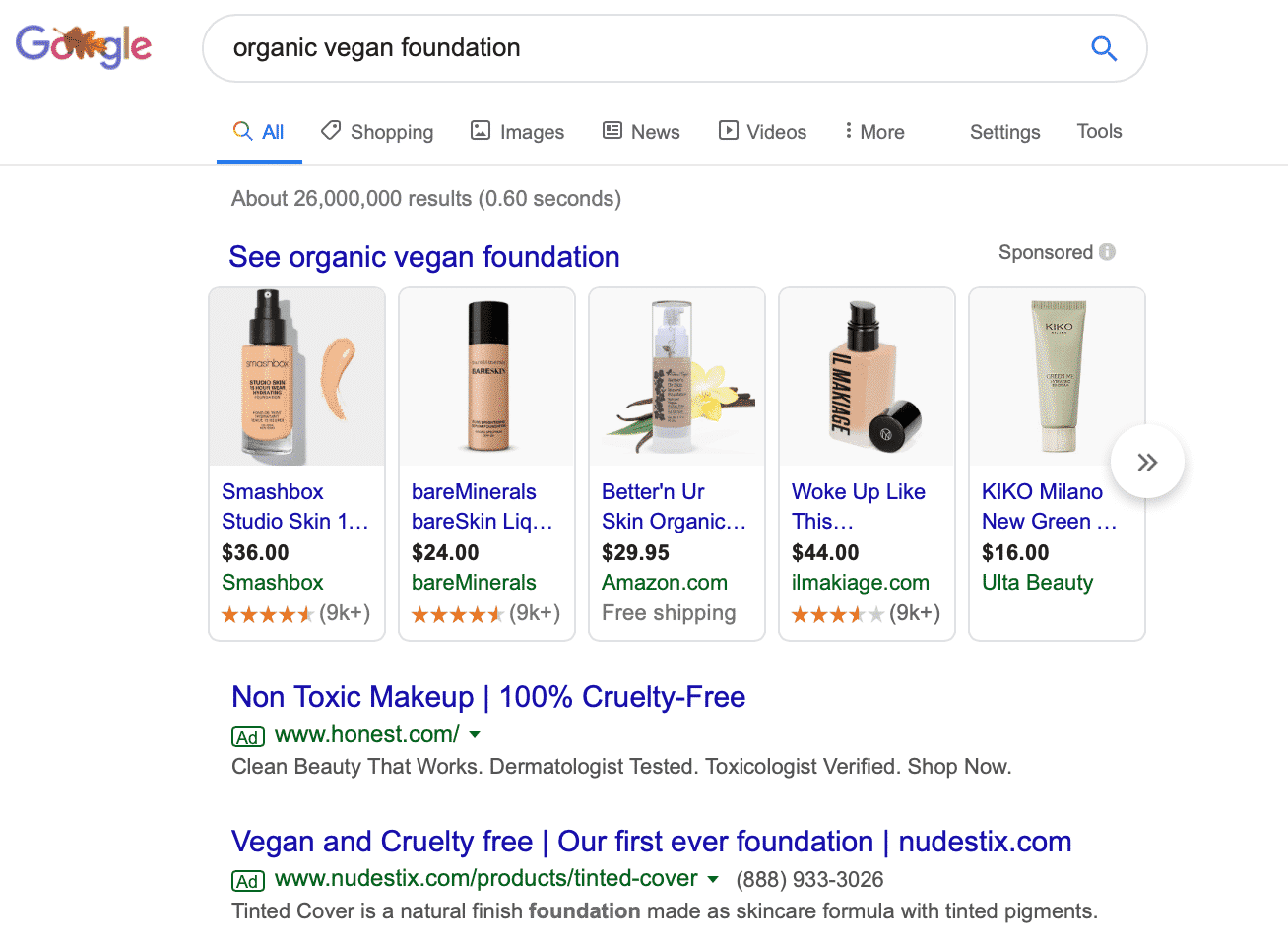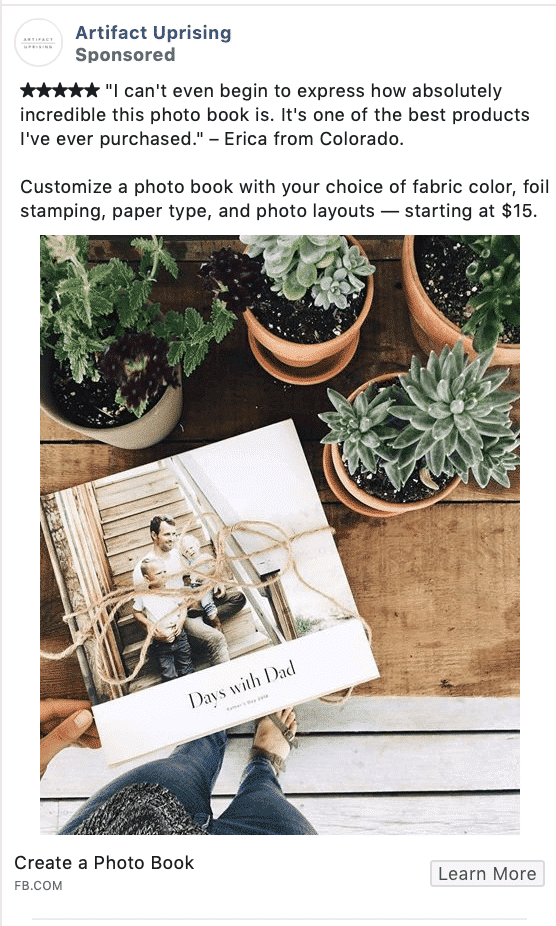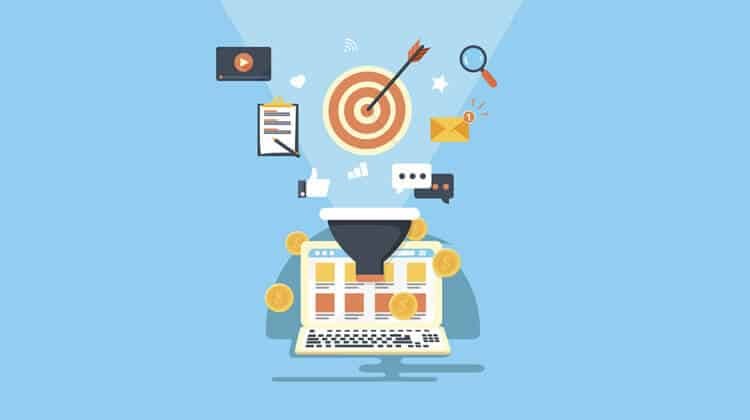What is a Marketing Funnel and Why Do I Need One?
by Ana Gotter • September 19, 2019
Buyer behavior has changed over the past two decades, evolving to adapt with the new tools and resources available to us.
One of the biggest changes that we’ve seen is an increase in research, which is a natural reaction to the information and sheer number of options we have thanks to the accessibility of both ecommerce sites and the prevalence of reviews. People are taking more time to research even smaller product decisions, putting dedicated research into purchases as small as a pack of coasters to ensure it’s got great reviews.
In the middle of having all these great options, we don’t just know this as a general fact—we’re constantly reminded of it daily, seeing an average of 5,000 ads per day, including sponsored messages from influencers and email campaigns. So we’re seeing more products, but are more cautious to purchase.
The best way to handle this as a business? Marketing funnels.
Marketing funnels put your brand on the map and nurture users through their entire buyer’s journey so that they’ll hopefully end up purchasing with you.
If you aren’t using marketing funnels, you should be, and even if you are, there may be new types of funnels you can set up that you haven’t considered yet. In this post, we’re going to take a look at everything you need to know about marketing funnels, including what they are, why you need them, and how to create them. But before we get started looking at funnels, we need to look at the stages of the buyer’s journey.
The 4 Key Stages of the Buyer’s Journey
It’s essential to understand the digital sales funnel and the different stages of a buyer’s journey before we start looking at marketing funnels, because they’re a crucial piece of the puzzle we’ll be referencing a lot in a minute.
The buyer’s journey details different steps customers typically make (even briefly) from the time they first discover your brand or product to the time they purchase, and even beyond. While different models of this concept include some variation in stages, here are the basics:
- Discovery: The consumer first discovers your product or brand. It’s the first introduction.
- Research/Consideration: Consumers see more from your product and consider purchasing, almost certainly researching before they do so. Research can be as simple as viewing reviews on your site or measuring a space in their home to make sure that the desk you’re selling fits, or as complex as comparing your product against multiple others with reviews from several sources.
- Purchase: The consumer decides to purchase! Hooray!
- Loyalty building: Some sales funnel models only focus on the stages leading up to purchase, but re-engagement campaigns are important after the fact too to maintain client retention rates and establish loyalty.
What is a Marketing Funnel?
As you can see by looking at the stages of the buyer’s journey, users will often need to interact with your business more than once—and often many more times than once—before they’re ready to purchase.
https://giphy.com/gifs/snl-saturday-night-live-season-44-RHIYhjyA2R8IibyqPU
A marketing funnel is designed to help with that. It uses campaigns that are structured to have multiple levels and strategies to appeal to audiences at all different stages.
There are campaigns, for example, that will just be focused on generating audience awareness and getting users to the discovery stage. Then, they’ll retarget based on site visits to create a retargeting campaign for customers in the research or consideration stages, hitting them with a free webinar offer. They then have the customer’s email address and follow up with emails and coupon codes incentivizing them to purchase.
You’re using your campaigns to funnel users towards purchasing, and doing what you can to track those actions and move them to the next ones accordingly. You can do this with a single ad platform or medium, or use multiple different types of touchpoints to get the job done; we’ll look at both options in a few minutes.
Why You Need Marketing Funnels
Marketing funnels are an important part of marketing. Without them, your campaigns will likely struggle if not fail entirely.
I have a lot of clients, for example, who only want to hire me to write ad copy that will drive immediate conversions from cold audiences. They’re frustrated to hear that additional follow up campaigns are necessary, and it’s always the clients who work with me to set up distinct funnels who get the best results.
You want to create content for users at each specific stage that’s relevant to them for best results. New-to-you consumers may be interested in a video introducing the concept of your product, but those in the research stage will respond more to those containing details of why the product is superior, unique features, and an offer for free shipping. The video would be downright useless to long-term customers who would rather see something about new products that are just out, or a reminder to restock soon.
There is the idea, too, that customers need to see an ad from you seven times before they’re willing to purchase. I haven’t seen data that backs up this specific number, but the concept is solid.
If you were to see an ad on Facebook or a commercial for a new detergent that cleans your dishes even if they’re caked in food that’s been baked on and refrigerated for three weeks, you’d maybe think “that’s cool,” and leave it at that. There might be a few people who just cleaned up an enormous dinner party who purchase immediately, but everyone else will continue on.
The second time you see it, however, you might look more into it and discover that it’s plant-based, which is important to you. The third time, you think about purchasing. Maybe the fourth or fifth time you actually do, especially once you see a coupon offer for 15% off.
Marketing funnels allow you to keep re-engaging your audience at every stage of their journey. You aren’t leaving anyone out, so you’re staying on their radar. If you aren’t using funnels, I can tell you right now that your campaigns will be a little more disjointed and a lot less effective.
Different Types of Marketing Funnels
There are multiple different types of marketing funnels that you can use. Their purpose is all the same: you set them up to bring users into the sales funnel and get them through to the next stage. They’re just using different marketing channels to achieve the same result.
Let’s take a look at a few different options.
Content Marketing Funnel
We’re going to start with my personal favorite: content marketing funnels.
Content marketing, after all, is an outstanding way to attract consumers at all stages of the funnel.
Let’s say that you’re a florist trying to grow your client list. You’ll want to write multiple blog posts and even create lead magnets for users who are at all stages of the buying process, and when you consider search intent, you can find the keywords and topics that can help you do that.
You’ll be able to reach new-but-relevant audiences with content like “how much do wedding flowers cost” and plug yours as a lower-cost option to big name brands, and create content like “how to make my bouquets last longer” that you can send out in an email to re-engage customers after they’ve purchased. You can release a lead magnet made up of a guide of seasonal flowers to help people stay on-budget at all points of the year, or even explain the meaning behind different blossoms.

Within a content marketing funnel, you’ll use keywords that will bring in users at each stage of the funnel and then move them intentionally to the next by referring them to other resources or landing pages you’ve published. This does take a lot of planning and working backward (you need to have that lead magnet up before you can send traffic to it from a blog post), but it’s incredibly effective over time because it’s a touchpoint people can interact with at any point and any stage.
Google Ad Marketing Funnel
Google Ads, in many cases, will capture users who may not have heard about your brand or product yet, but who are actively researching for a buying decision. They’re a hot audience, and a Google search ad can be key to connecting with them, so basing a marketing funnel can work well.
If someone is searching for “organic vegan foundation” and you happen to have an organic vegan makeup company, that’s your chance to swoop in with an ad for prime placement and introduce your brand and product to the customer.

If they click on your ad, they’ll be taken to a landing page or product page. Once this happens, you can use retargeting through Google’s Display Ads to follow them around the internet (in a non-creepy way, of course) showing them relevant products or even a video. These campaigns can send users to another page, which will feature a pop-up that offers them 10% off if they leave their email address, allowing you to then contact them directly with more aggressive marketing campaigns.
Facebook Ads Marketing Funnel
Facebook Ads are a little more full-funnel friendly than Google Ads in some ways because there are currently more retargeting options and a lot more interest-based targeting that helps you attract the right audience members faster.
With Facebook Ads, you can either use lookalike audiences or interest and demographic targeting to reach a new, cold audience that you believe would be interested in what you have to offer. You could show them a video ad, for example, explaining why your product or brand is special.
You’ll then use advanced retargeting strategies to keep users moving through the funnel—maybe the next ad retargets off of video views, and shows users a lead ad. You can then retarget users with special offers after they convert, or follow up with an ad for users who clicked on the lead ad but didn’t fill it out, trying to offer an incentive for them to do so. And so on, and so on.
Artifact Uprising might use this ad to generate brand awareness and interest:

And this one, using UGC and social proof, to incentivize purchases:

Facebook Ads has a wide audience, and it gives you the distinct advantage of being able to introduce your brand to your audience without waiting for them to come looking for you. Even with the loss of some potential retargeting features starting later this year, it’s a valuable asset.
Omnichannel Marketing Funnel
Distinct ad funnels that only use one marketing platform are relatively easy to conceptualize, but cross-platform and omnichannel funnels will often be the most powerful.
Using a diverse mix of platforms on a single funnel can allow you to reach more people in more places, giving your campaigns more impressions and making them more powerful.
You might, for example, use content marketing and SEO strategies to get people to your site. From there, you might have a retargeting campaign set up on Facebook to show users a relevant lead magnet based on the specific post they viewed. The lead magnet can be downloaded in exchange for leaving their email address.
The email addresses can be used to run retargeting campaigns on multiple platforms, offering exclusive deals for a first-time purchase and to send emails directly to the user’s inbox. Once the customer has purchased, emails containing information about care, use, and tracking can be sent to the customer to keep them engaged.
Omnichannel funnels allow you to integrate the strongest aspect of each platform onto your campaign, along with adding in elements that don’t typically work well as full-funnel devices on their own.
Influencer marketing, for example, is often good for brand awareness and even purchasing, but not re-engagement. Email marketing, on the other hand, is exceptionally effective but requires you to first get a customer’s email address. A healthy mix can work well.
How to Create a Marketing Funnel
Setting up a marketing funnel isn’t nearly as difficult as you’d imagine.
First, decide what audience niches you want to target, and consider which platforms you’d like to use. I’ve found that it’s helpful to work your way back if you’re stumped.
If you know, for example, that email is the most effective way to drive sales with your specific B2B audience niche, then you need to find a way to get users’ email addresses and warm them up. Facebook lead ads and content marketing-based leads are good choices for this.
Think about where you want to go, and then ask yourself what you have to do to get that ultimate result. A lead magnet, after all, won’t be effective unless you get people to it in the first place.
Look at users at each stage of the funnel. Ask where your best chances of connecting with them are, and what they need to do to get to the next step. The intention isn’t just to show them an ad, but to get them from point A to point B (and then C, and D, and however long it takes to get to purchase).
An important factor will be asking how you can funnel down the audience relevance, making it more relevant as you go on, and what technology you need to use to create the next follow-up campaign. You need Facebook’s or YouTube’s retargeting abilities, for example, if you want to capitalize on on-platform video views.
Conclusion
Marketing funnels are versatile, and they can be complex. This can sometimes feel overwhelming when businesses or marketers have to start setting them up for the first time, so just start where it makes sense to and work your way back.
Consider where you’d be most likely to find your target audience and what mediums they’re most likely to use and respond to. In many cases, setting up omnichannel, cross-platform funnels is a good long-term goal, giving you the best chances to connect with your audience in the specific ways they most want to see. A little trial and error will always be needed, but casting a wide net is a good call here.
Need help setting up powerful and effective marketing funnels for your business? Learn more about how we can help you here.
What do you think? What types of marketing funnels have benefited you most? How do you develop the funnels you use to attract your audience? Share your thoughts and questions in the comments below!




